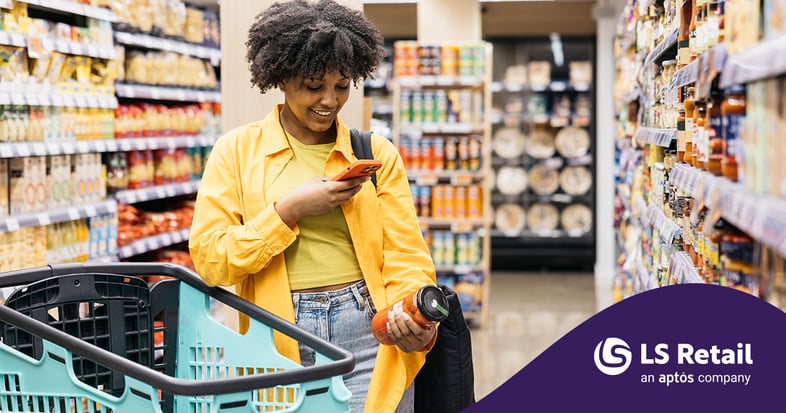5 automation trends in convenience retail

You’ve probably already heard about Amazon’s futuristic convenience stores, where customers pick up what they need and walk out without waiting in line. At the time of their launch, this kind of technology felt like science fiction, yet it’s already becoming fairly mainstream. In fact, chances are you’re already using some of these automated solutions in your own convenience stores, whether it’s a fuel station serving fresh food from a semi-automated kitchen or the scan-and-go checkouts in a busy mini supermarket serving commuters on their way into the office.
The global convenience retail market is expected to be worth over US$1 trillion by the end of the decade, and a big reason for this growth will be automation. As retailers increasingly rely on automated solutions to handle everything from checkout and stock management to food service and security, they’ll be able to operate more efficiently, serve customers even faster, and stand out in a crowded market.
Want to find out what’s on the horizon for fuel and convenience retailers like you? Here are five automation trends transforming everyday operations.
1. Self-checkout and scan-pay-go
Speed is everything when your customers are on the go. Whether they're grabbing a quick coffee between meetings, picking up lunch during a short break, or stocking up on snacks before a road trip, convenience store shoppers aren’t browsing, they’re on a mission. In this high-paced environment, a lengthy checkout process can quickly turn into a deal-breaker.
That’s why self-checkout kiosks and mobile scan-pay-go apps are rapidly becoming standard in convenience retail. According to a recent report from RBR, self-checkout transactions are expected to make up nearly 40% of all retail transactions globally by 2026. The appeal is simple: less waiting, more control. Customers can scan items as they shop, pay through their phone or at a kiosk, and skip the line entirely. While some convenience retail businesses are simply adding scan-pay-go as a checkout option, others are taking things to the next level by running completely autonomously on these solutions.
Take R-Kiosk GO, Estonia’s first unmanned store, as an example. Customers simply enter using a bank card or the mobile app, grab what they need, and walk out. No checkout lines, no waiting. Behind the scenes, AI-powered sensors and cameras track product movements in real time, automatically updating each shopper’s virtual cart.
“Innovation touches every part of the retail experience, even if customers only see a fraction of what’s happening behind the scenes,” says Tiia Ilves, CEO of Reitan Convenience Estonia, which operates R-Kiosk. “Technology helps us create a more intuitive shopping journey. But it also means keeping both staff and customers informed and comfortable with these new tools.”
2. Smart shelves
According to a study by McKinsey, retailers using smart shelf technology can reduce out-of-stock rates by up to 30% and cut manual inventory checks by nearly 40%. In a store where customers expect to grab what they need and go, those numbers matter.
Equipped with a combination of RFID tags, weight sensors, and cameras, smart shelves monitor stock levels in real time. They automatically flag when items are running low or misplaced, helping staff keep shelves filled, especially with fast-moving essentials like bottled drinks, snacks, and ready-to-eat meals, without the need for constant manual checks.
Retailers at the forefront, like Amazon Go and Ahold Delhaize, are already leveraging smart shelving to enable cashierless shopping and real-time replenishment. But the benefits go beyond availability. Some retailers are tapping into the behavioral data captured by shelf sensors and video analytics to better understand how customers shop. What draws attention? What gets picked up and put back? These insights are now helping brands optimize product placement, pricing strategies, and in-store promotions, creating more personalized experiences.
3. AI-driven demand forecasting
Convenience retailers operate on thin margins, and every wasted product can have a big impact on the bottom line. AI-powered forecasting tools help solve that by taking into account everything from past sales and weather patterns to local events and fuel prices, all to better predict demand.
Traditional forecasting methods rely mostly on historical sales, but modern AI systems draw from a wide range of real-time variables — including weather conditions, local events, holidays, time of day, fuel prices, and even social media trends — to build highly accurate demand models. For example, if there’s a heatwave coming, the system can predict a spike in cold drink sales. If there’s a festival in town, it can suggest stocking up on snacks and grab-and-go meals. The results are significant. A Deloitte report found that retailers using AI forecasting tools reduced inventory costs by up to 20%, while also cutting food waste by as much as 30%.
Convenience retailers like FamilyMart in Japan have started experimenting with AI-driven demand planning to optimize inventory across locations. Some systems even recommend store layout changes based on local preferences, so your bestsellers are front and center, not hidden away on the bottom shelf. All of these insights lead to smarter ordering, fewer stockouts and less waste.
4. Security supported by AI
According to a recent study by the Loss Prevention Research Council, retailers using AI-based video analytics reduced shrinkage by up to 35% and reported a significant improvement in incident response times. In regions like North America and Western Europe, where organized retail crime has surged, these tools are becoming essential for stores operating overnight or with limited staff.
Unlike traditional security cameras that merely record footage, AI-powered security systems monitor in-store activity, flag unusual behavior, and alert staff if something doesn’t seem right. For example, if a customer lingers too long near high theft items, attempts to hide merchandise, or fails to scan all items at a self-checkout, the system can immediately flag the incident and alert staff. Some systems even integrate directly with point-of-sale (POS) terminals to verify that the products scanned match the items being taken
5. Kitchen robotics and KDS
Food service has become one of the fastest-growing revenue streams in convenience retail. In fact, recent industry data shows that prepared food sales now account for over 25% of in-store revenue. From breakfast sandwiches and fresh pizza to fried chicken and coffee, today’s customers expect more than just packaged snacks.
But meeting that demand isn’t easy. Staffing kitchen areas during peak hours can be chaotic, especially in small-format stores with limited space and personnel. That’s where automation and digital kitchen tools are stepping in to transform operations. At the high end of innovation, some stores are piloting AI robotic chefs to prepare menu staples like fries, wings, and chicken tenders with minimal human oversight. This is exactly what a new fully AI-powered convenience store chain in the U.S. called Re-Up is trying out with its autonomous frying stations.
For most retailers, the first and most impactful step is implementing a Kitchen Display System (KDS). Instead of juggling handwritten tickets or shouting orders across the store, a KDS sends orders directly from the POS to a digital screen in the kitchen, organizing them by prep time and priority. According to research from Technomic, locations that adopt KDS can increase order accuracy by up to 25% and reduce average prep time by 10–15%. That means fewer mistakes, faster service and a smoother workflow for staff.
Smart and speedy convenience retail
Automation isn’t just a way to replace people. It has a valuable role to play alongside your existing team, helping to support their daily work, improve the customer experience, and create a leaner, more responsive business model as you grow.
At LS Retail, we support fuel and convenience retail chains with unified POS and business management software solutions that bring all your operations together on one platform. Curious to know more? Get in touch with our team to find out how we can help you modernize your business and stay ahead of trends.
